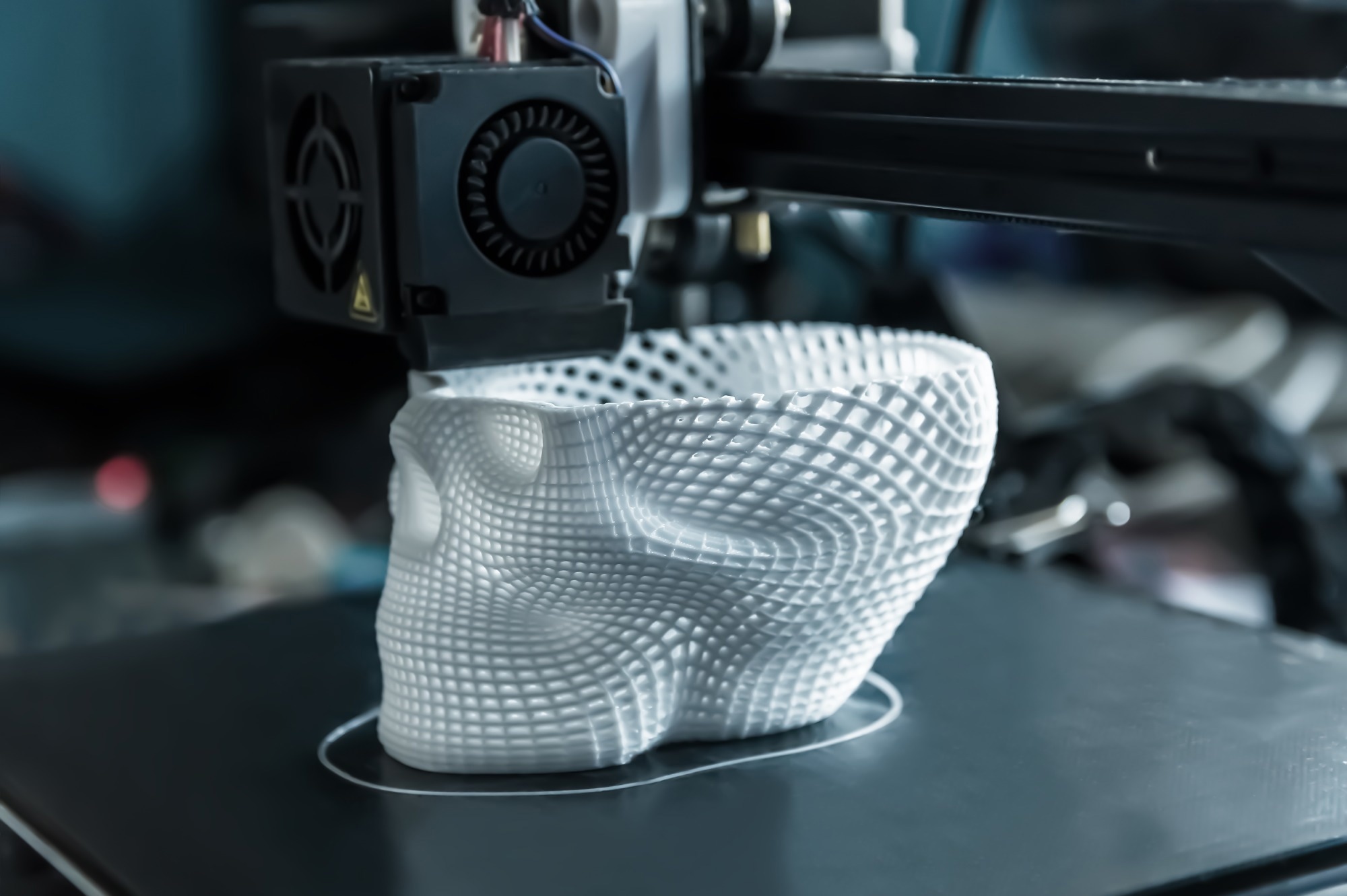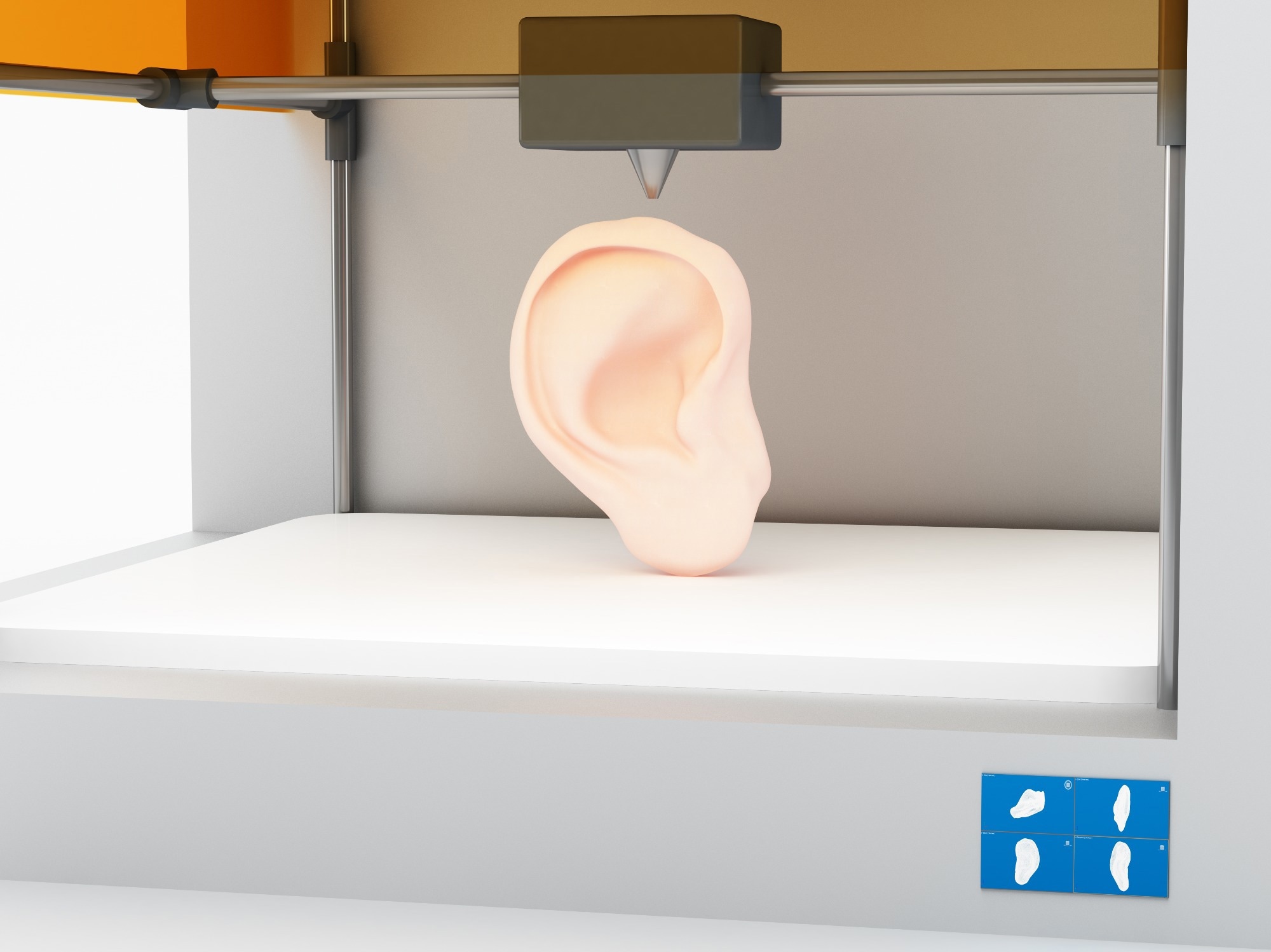Brief history of 3D printing technology
Innovations in surgical tools and equipment
Personalized prosthetics and implants
Breakthroughs in 3D-printed organs
References
3D printing is still a relatively novel method of manufacture, and has already diversified massively in terms of printing methods, materials, and design possibilities, finding niche application in a range of fields, including healthcare and the life sciences.
3D printing is having a transformative impact on the way surgery and dentistry is performed, and how prosthetics and implants are designed, allowing the creation of custom, personalized items fit for the patient or the particular task at hand.
This article will explore the wide-ranging applications of 3D printing in healthcare, from creating surgical tools to facilitating organ transplants.
 Image Credit: Olga Ilina/Shutterstock.com
Image Credit: Olga Ilina/Shutterstock.com
Brief history of 3D printing technology
3D printing typically refers to an additive manufacturing process, i.e. one where material is added in successive layers or stages, rather than being removed from bulk material (subtractive) or directly molded to shape, as with materials such as thermosetting plastics.
One of the earliest forms of 3D printing was stereolithography, now more commonly termed resin printing, in which a UV laser is aimed in the desired pattern in a layer-by-layer manner at photopolymer resin, hardening it and transforming the liquid into a solid three dimensional structure.
Research into this technology was ongoing throughout the 1970s and patented in 1984, and is broadly utilized to produce custom manufactured parts. The type of resin employed can be adapted to purpose; for biocompatibility in cases of biological implant or prosthesis, for toughness and rigidity where required, and so on.
The term 3D printing was not actually coined until 1995, by Professor Ely Sachs, MIT, who worked on modifying inkjet printers to extrude a binding solution onto a powder bed, known as powder bed fusion 3D printing (of which there are many types: selective laser sintering, direct metal laser sintering, electron beam melting, etc.).
This method of printing evolved into many of the types perhaps more commonly used today, which employ a frame capable of moving an extrusion head in three dimensions above a platform, such as fused deposition modeling (FDM) 3D printing.
Now, there are over 18 methods of 3D printing, each with numerous modifications, allowing custom products to be manufactured in a broad range of materials, with differing degrees of ease and accessibility, quality, and suitability towards medical applications.
Innovations in surgical tools and equipment
3D printing is increasingly employed in the creation of surgical aids, including the design and production of accurate training models, specialized instruments, and scaffolds that aid in implantation or tissue repair.
One of the major advantages of 3D printing technologies is that iterative changes can be made to newly designed tools based on immediate feedback from surgeons and other medical professionals; design changes can be implemented in silico and a new device printed overnight.
The facility of producing patient specific training models could potentially be revolutionary in terms of the way surgery is performed, as the highly particular details of a patient’s internal organs, as ascertained from various scanning technologies, can be reproduced in detail.
This leaves fewer surprises for surgeons during surgery, and would massively assist in preparation for more complex surgeries.
 Image Credit: belekekin/Shutterstock.com
Image Credit: belekekin/Shutterstock.com
Personalized prosthetics and implants
Some of the major issues with ordinary mass-produced prosthetics is surrounding abandonment; the user ceases to wear the prosthetic as they are uncomfortable, awkward, or unappealing aesthetically.
Bionic prosthetics, which are capable of coordinating roboting movement by muscle contractions, must in particular be positioned and secured carefully in order to maintain their function and comfortable usability.
The custom sizing possible using 3D printing technologies allows much more comfortable prosthetics to be manufactured from biocompatible components, potentially in more complex designs and lower mass than traditional prosthetics.
In 2014 a conference was held at Johns Hopkins Hospital titled: Prosthetists Meet 3D Printers, in which medical and 3D printing experts met to discuss the state and future of 3D printing of prosthetics.
A broad range of collaborative efforts are currently underway with a view to utilizing 3D printing in prosthetics. For example, prosthetic devices are freely available to download and print at home on a number of dedicated websites, while many companies dedicated to producing prosthetic devices for particular markets have emerged.
For example, Openbionics is a UK based company that prints custom prosthetics, with superhero designs aimed at children, ones with specialized fittings for musicians, and so on.
Breakthroughs in 3D-printed organs
Various biomaterials can be laid down in an additive manufacturing method such as 3D printing to produce implantable scaffolds, tissues, and even whole new organs.
Bioinks containing living cells are deposited in a layer-by-layer manner to print the organ, typically employing a scaffold and/or natural polymers within the bioink, which harden and keep the cells in place; hydrogel polymers such as fibrin, gelatin, alginates, chitosan, and hyaluronic acids are typically employed. 3D printed organs such as this contain cells cultured from the patient, and thus are much more biocompatible than a donor organ.
There are several types of organ 3D printing, and the technology is still in its infancy. One of the earliest and most broadly employed methods is known as cell seeding, wherein a supporting scaffold is 3D printed from biocompatible materials and then seeded with cells that will propagate to fill the structure, potentially in situ in order to aid in wound healing.
Where custom organs are 3D printed they can be made to best suit the patient, not only in terms of biocompatibility but also in terms of shape and size; for example, adjusting the size of the heart valves to patient size.
References
- Dodziuk, H. (2016). Applications of 3D printing in healthcare. Polish Journal of Cardio-thoracic Surgery, 3, 283–293. https://doi.org/10.5114/kitp.2016.62625
- George, M., Aroom, K. R., Hawes, H. G., Gill, B. S., & Love, J. (2017). 3D Printed Surgical Instruments: The Design and Fabrication Process. World Journal of Surgery, 41(1), 314–319. https://doi.org/10.1007/s00268-016-3814-5
- Manero, A., Smith, P., Sparkman, J., Dombrowski, M., Courbin, D., Kester, A., Womack, I., & Chi, A.. (2019). Implementation of 3D Printing Technology in the Field of Prosthetics: Past, Present, and Future. International Journal of Environmental Research and Public Health, 16(9), 1641. https://doi.org/10.3390/ijerph16091641
- Openbionics. https://openbionics.com/en/
- Javaid, M., & Haleem, A.. (2020). 3D printed tissue and organ using additive manufacturing: An overview. Clinical Epidemiology and Global Health, 8(2), 586–594. https://doi.org/10.1016/j.cegh.2019.12.008